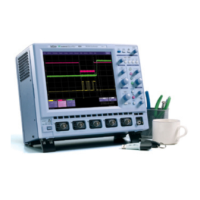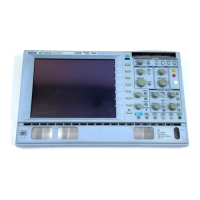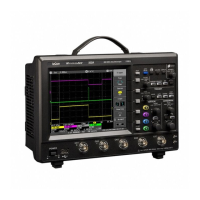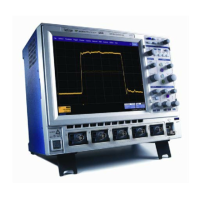Operator's Manual
106 WS-OM-E Rev B
FFT
Why Use FFT?
For a large class of signals, you can gain greater insight by looking at spectral representation
rather than time description. Signals encountered in the frequency response of amplifiers,
oscillator phase noise and those in mechanical vibration analysis, for example, are easier to
observe in the frequency domain.
If sampling is done at a rate fast enough to faithfully approximate the original waveform (usually
five times the highest frequency component in the signal), the resulting discrete data series will
uniquely describe the analog signal. This is of particular value when dealing with transient signals
because, unlike FFT, conventional swept spectrum analyzers cannot handle them.
Spectral analysis theory assumes that the signal for transformation is of infinite duration. Since no
physical signal can meet this condition, a useful assumption for reconciling theory and practice is
to view the signal as consisting of an infinite series of replicas of itself. These replicas are
multiplied by a rectangular window (the display grid) that is zero outside of the observation grid.
An FFT operation on an N-point time domain signal can be compared to passing the signal
through a comb filter consisting of a bank of N/2 filters. All the filters have the same shape and
width and are centered at N/2 discrete frequencies. Each filter collects the signal energy that falls
into the immediate neighborhood of its center frequency. Thus it can be said that there are N/2
frequency bins. The distance in Hz between the center frequencies of two neighboring bins is
always the same: Delta f.
Power (Density) Spectrum
Because of the linear scale used to show magnitudes, lower amplitude components are often
hidden by larger components. In addition to the functions offering magnitude and phase
representations, the FFT option offers power density and power spectrum density functions.
These latter functions are even better suited for characterizing spectra. The power spectrum (V
2
)
is the square of the magnitude spectrum (0 dBm corresponds to voltage equivalent to 1 mW into
50 ohms.) This is the representation of choice for signals containing isolated peaks — periodic
signals, for instance.
The power density spectrum (V
2
/Hz) is the power spectrum divided by the equivalent noise
bandwidth of the filter associated with the FFT calculation. This is best employed for
characterizing broadband signals such as noise.
Memory for FFT
The amount of acquisition memory available will determine the maximum range (Nyquist
frequency) over which signal components can be observed. Consider the problem of determining
the length of the observation window and the size of the acquisition buffer if a Nyquist rate of 500
MHz and a resolution of 10 kHz are required. To obtain a resolution of 10 kHz, the acquisition
time must be at least:
T = 1/Delta f = 1/10 kHz = 100 ms

